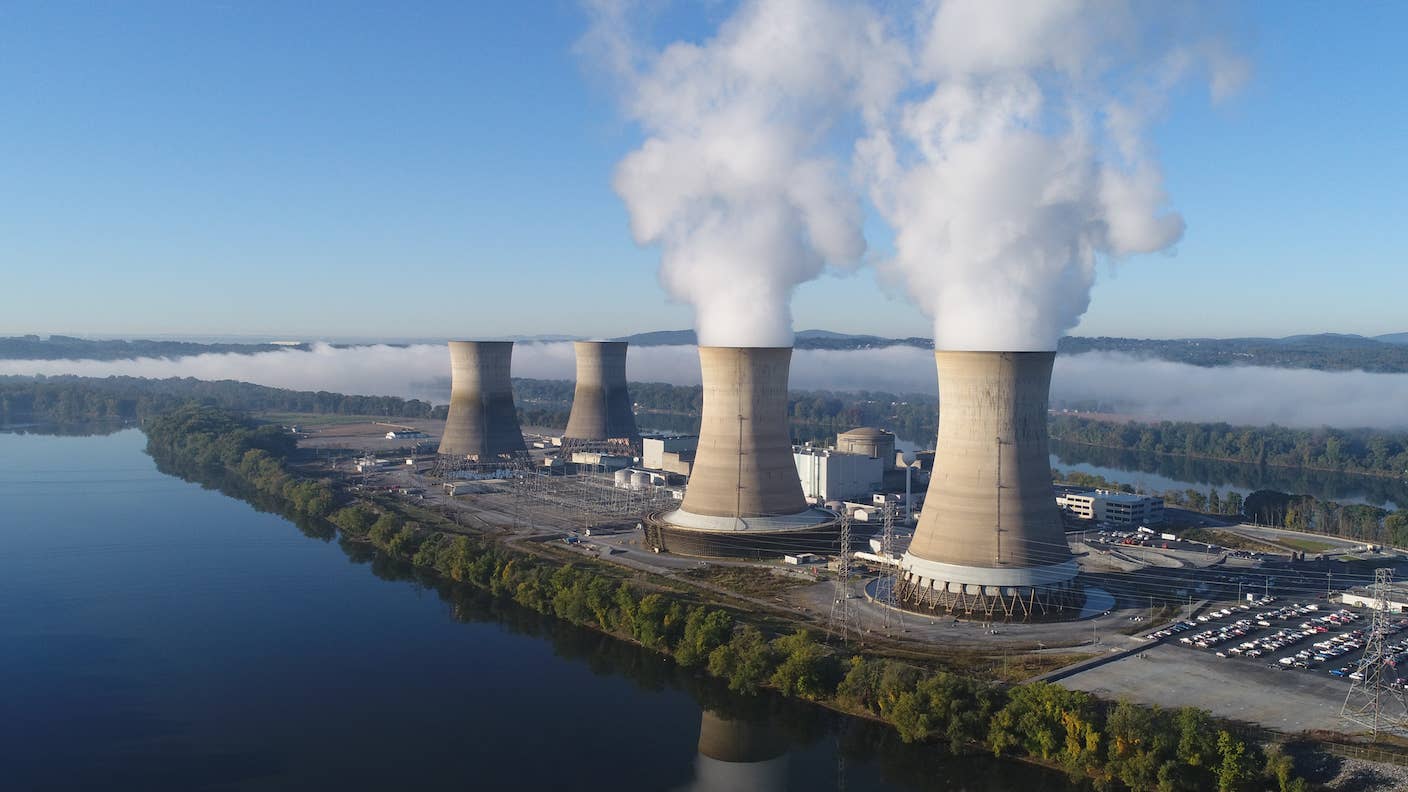How Technology Is Driving Us Toward Peak Globalization

Share
At some point in the future—and in some ways we are already seeing this—the amount of physical stuff moving around the world will peak and begin to decline. By “stuff,” I am referring to liquid fuels, coal, containers on ships, food, raw materials, products, etc.
New technologies are moving us toward “production-at-the-point-of-consumption” of energy, food, and products with reduced reliance on a global supply chain.
The trade of physical stuff has been central to globalization as we’ve known it. So, this declining movement of stuff may signal we are approaching “peak globalization.”
To be clear, even as the movement of stuff may slow, if not decline, the movement of people, information, data, and ideas around the world is growing exponentially and is likely to continue doing so for the foreseeable future.
Peak globalization may provide a pathway to preserving the best of globalization and global interconnectedness, enhancing economic and environmental sustainability, and empowering individuals and communities to strengthen democracy.
At the same time, some of the most troublesome aspects of globalization may be eased, including massive financial transfers to energy producers and loss of jobs to manufacturing platforms like China. This shift could bring relief to the “losers” of globalization and ease populist, nationalist political pressures that are roiling the developed countries.
That is quite a claim, I realize. But let me explain the vision.
New Technologies and Businesses: Digital, Democratized, Decentralized
The key factors moving us toward peak globalization and making it economically viable are new technologies and innovative businesses and business models allowing for “production-at-the-point-of-consumption” of energy, food, and products.
Exponential technologies are enabling these trends by sharply reducing the “cost of entry” for creating businesses. Driven by Moore’s Law, powerful technologies have become available to almost anyone, anywhere.
Beginning with the microchip, which has had a 100-billion-fold improvement in 40 years—10,000 times faster and 10 million times cheaper—the marginal cost of producing almost everything that can be digitized has fallen toward zero.
A hard copy of a book, for example, will always entail the cost of materials, printing, shipping, etc., even if the marginal cost falls as more copies are produced. But the marginal cost of a second digital copy, such as an e-book, streaming video, or song, is nearly zero as it is simply a digital file sent over the Internet, the world’s largest copy machine.* Books are one product, but there are literally hundreds of thousands of dollars in once-physical, separate products jammed into our devices at little to no cost.
A smartphone alone provides half the human population access to artificial intelligence—from SIRI, search, and translation to cloud computing—geolocation, free global video calls, digital photography and free uploads to social network sites, free access to global knowledge, a million apps for a huge variety of purposes, and many other capabilities that were unavailable to most people only a few years ago.
As powerful as dematerialization and demonetization are for private individuals, they’re having a stronger effect on businesses. A small team can access expensive, advanced tools that before were only available to the biggest organizations. Foundational digital platforms, such as the internet and GPS, and the platforms built on top of them by the likes of Google, Apple, Amazon, and others provide the connectivity and services democratizing business tools and driving the next generation of new startups.
"As these trends gain steam in coming decades, they'll bleed into and fundamentally transform global supply chains."
An AI startup, for example, doesn’t need its own server farm to train its software and provide service to customers. The team can rent computing power from Amazon Web Services. This platform model enables small teams to do big things on the cheap. And it isn’t just in software. Similar trends are happening in hardware too. Makers can 3D print or mill industrial grade prototypes of physical stuff in a garage or local maker space and send or sell designs to anyone with a laptop and 3D printer via online platforms.
These are early examples of trends that are likely to gain steam in coming decades, and as they do, they’ll bleed into and fundamentally transform global supply chains.
The old model is a series of large, connected bits of centralized infrastructure. It makes sense to mine, farm, or manufacture in bulk when the conditions, resources, machines, and expertise to do so exist in particular places and are specialized and expensive. The new model, however, enables smaller-scale production that is local and decentralized.
To see this more clearly, let’s take a look at the technological trends at work in the three biggest contributors to the global trade of physical stuff—products, energy, and food.
Products
3D printing (additive manufacturing) allows for distributed manufacturing near the point of consumption, eliminating or reducing supply chains and factory production lines.
This is possible because product designs are no longer made manifest in assembly line parts like molds or specialized mechanical tools. Rather, designs are digital and can be called up at will to guide printers. Every time a 3D printer prints, it can print a different item, so no assembly line needs to be set up for every different product. 3D printers can also print an entire finished product in one piece or reduce the number of parts of larger products, such as engines. This further lessens the need for assembly.
Because each item can be customized and printed on demand, there is no cost benefit from scaling production. No inventories. No shipping items across oceans. No carbon emissions transporting not only the final product but also all the parts in that product shipped from suppliers to manufacturer. Moreover, 3D printing builds items layer by layer with almost no waste, unlike “subtractive manufacturing” in which an item is carved out of a piece of metal, and much or even most of the material can be waste.
Finally, 3D printing is also highly scalable, from inexpensive 3D printers (several hundred dollars) for home and school use to increasingly capable and expensive printers for industrial production. There are also 3D printers being developed for printing buildings, including houses and office buildings, and other infrastructure.
The technology for finished products is only now getting underway, and there are still challenges to overcome, such as speed, quality, and range of materials. But as methods and materials advance, it will likely creep into more manufactured goods.
Ultimately, 3D printing will be a general purpose technology that involves many different types of printers and materials—such as plastics, metals, and even human cells—to produce a huge range of items, from human tissue and potentially human organs to household items and a range of industrial items for planes, trains, and automobiles.
Energy
Renewable energy production is located at or relatively near the source of consumption.
Although electricity generated by solar, wind, geothermal, and other renewable sources can of course be transmitted over longer distances, it is mostly generated and consumed locally or regionally. It is not transported around the world in tankers, ships, and pipelines like petroleum, coal, and natural gas.
Moreover, the fuel itself is free—forever. There is no global price on sun or wind. The people relying on solar and wind power need not worry about price volatility and potential disruption of fuel supplies as a result of political, market, or natural causes.
Renewables have their problems, of course, including intermittency and storage, and currently they work best if complementary to other sources, especially natural gas power plants that, unlike coal plants, can be turned on or off and modulated like a gas stove, and are half the carbon emissions of coal.
Within the next decades or so, it is likely the intermittency and storage problems will be solved or greatly mitigated. In addition, unlike coal and natural gas power plants, solar is scalable, from solar panels on individual homes or even cars and other devices, to large-scale solar farms. Solar can be connected with microgrids and even allow for autonomous electricity generation by homes, commercial buildings, and communities.
Be Part of the Future
Sign up to receive top stories about groundbreaking technologies and visionary thinkers from SingularityHub.


It may be several decades before fossil fuel power plants can be phased out, but the development cost of renewables has been falling exponentially and, in places, is beginning to compete with coal and gas. Solar especially is expected to continue to increase in efficiency and decline in cost.
Given these trends in cost and efficiency, renewables should become obviously cheaper over time—if the fuel is free for solar and has to be continually purchased for coal and gas, at some point the former is cheaper than the latter. Renewables are already cheaper if externalities such as carbon emissions and environmental degradation involved in obtaining and transporting the fuel are included.
Food
Food can be increasingly produced near the point of consumption with vertical farms and eventually with printed food and even printed or cultured meat.
These sources bring production of food very near the consumer, so transportation costs, which can be a significant portion of the cost of food to consumers, are greatly reduced. The use of land and water are reduced by 95% or more, and energy use is cut by nearly 50%. In addition, fertilizers and pesticides are not required and crops can be grown 365 days a year whatever the weather and in more climates and latitudes than is possible today.
While it may not be practical to grow grains, corn, and other such crops in vertical farms, many vegetables and fruits can flourish in such facilities. In addition, cultured or printed meat is being developed—the big challenge is scaling up and reducing cost—that is based on cells from real animals without slaughtering the animals themselves.
There are currently some 70 billion animals being raised for food around the world [PDF] and livestock alone counts for about 15% of global emissions. Moreover, livestock places huge demands on land, water, and energy. Like vertical farms, cultured or printed meat could be produced with no more land use than a brewery and with far less water and energy.
A More Democratic Economy Goes Bottom Up
This is a very brief introduction to the technologies that can bring “production-at-the-point-of-consumption” of products, energy, and food to cities and regions.
What does this future look like? Here’s a simplified example.
Imagine a universal manufacturing facility with hundreds of 3D printers printing tens of thousands of different products on demand for the local community—rather than assembly lines in China making tens of thousands of the same product that have to be shipped all over the world since no local market can absorb all of the same product.
Nearby, a vertical farm and cultured meat facility produce much of tomorrow night’s dinner. These facilities would be powered by local or regional wind and solar. Depending on need and quality, some infrastructure and machinery, like solar panels and 3D printers, would live in these facilities and some in homes and businesses.
The facilities could be owned by a large global corporation—but still locally produce goods—or they could be franchised or even owned and operated independently by the local population. Upkeep and management at each would provide jobs for communities nearby. Eventually, not only would global trade of parts and products diminish, but even required supplies of raw materials and feed stock would decline since there would be less waste in production, and many materials would be recycled once acquired.
"Peak globalization could be a viable pathway to an economic foundation that puts people first while building a more economically and environmentally sustainable future."
This model suggests a shift toward a “bottom up” economy that is more democratic, locally controlled, and likely to generate more local jobs.
The global trends in democratization of technology make the vision technologically plausible. Much of this technology already exists and is improving and scaling while exponentially decreasing in cost to become available to almost anyone, anywhere.
This includes not only access to key technologies, but also to education through digital platforms available globally. Online courses are available for free, ranging from advanced physics, math, and engineering to skills training in 3D printing, solar installations, and building vertical farms. Social media platforms can enable local and global collaboration and sharing of knowledge and best practices.
These new communities of producers can be the foundation for new forms of democratic governance as they recognize and “capitalize” on the reality that control of the means of production can translate to political power. More jobs and local control could weaken populist, anti-globalization political forces as people recognize they could benefit from the positive aspects of globalization and international cooperation and connectedness while diminishing the impact of globalization’s downsides.
There are powerful vested interests that stand to lose in such a global structural shift. But this vision builds on trends that are already underway and are gaining momentum. Peak globalization could be a viable pathway to an economic foundation that puts people first while building a more economically and environmentally sustainable future.
This article was originally posted on Open Democracy (CC BY-NC 4.0). The version above was edited with the author for length and includes additions. Read the original article on Open Democracy.
* See Jeremy Rifkin, The Zero Marginal Cost Society, (New York: Palgrave Macmillan, 2014), Part II, pp. 69-154.
Image Credit: Joshua Rawson-Harris / Unsplash
Banning Garrett is an independent consultant, faculty at Singularity University, senior fellow at the Global Federation of Competitiveness Councils, and senior fellow at Global Urban Development. A Washington-based strategic thinker, writer, keynote speaker, and entrepreneur, Garrett focuses on the impact of exponential technologies and their intersection with long-term global trends, urbanization, and geopolitics. He has made presentations to think tanks, business groups, international conferences, UN organizations, and governments in Asia, Africa, Latin America, Europe, and the United States, has written for more than two dozen journals and media outlets, and been interviewed by numerous international broadcast and print media.
Related Articles

Sci-Fi Cloaking Technology Takes a Step Closer to Reality With Synthetic Skin Like an Octopus

Your ChatGPT Habit Could Depend on Nuclear Power

AI Can Now Design Proteins and DNA. Scientists Warn We Need Biosecurity Rules Before It’s Too Late.
What we’re reading